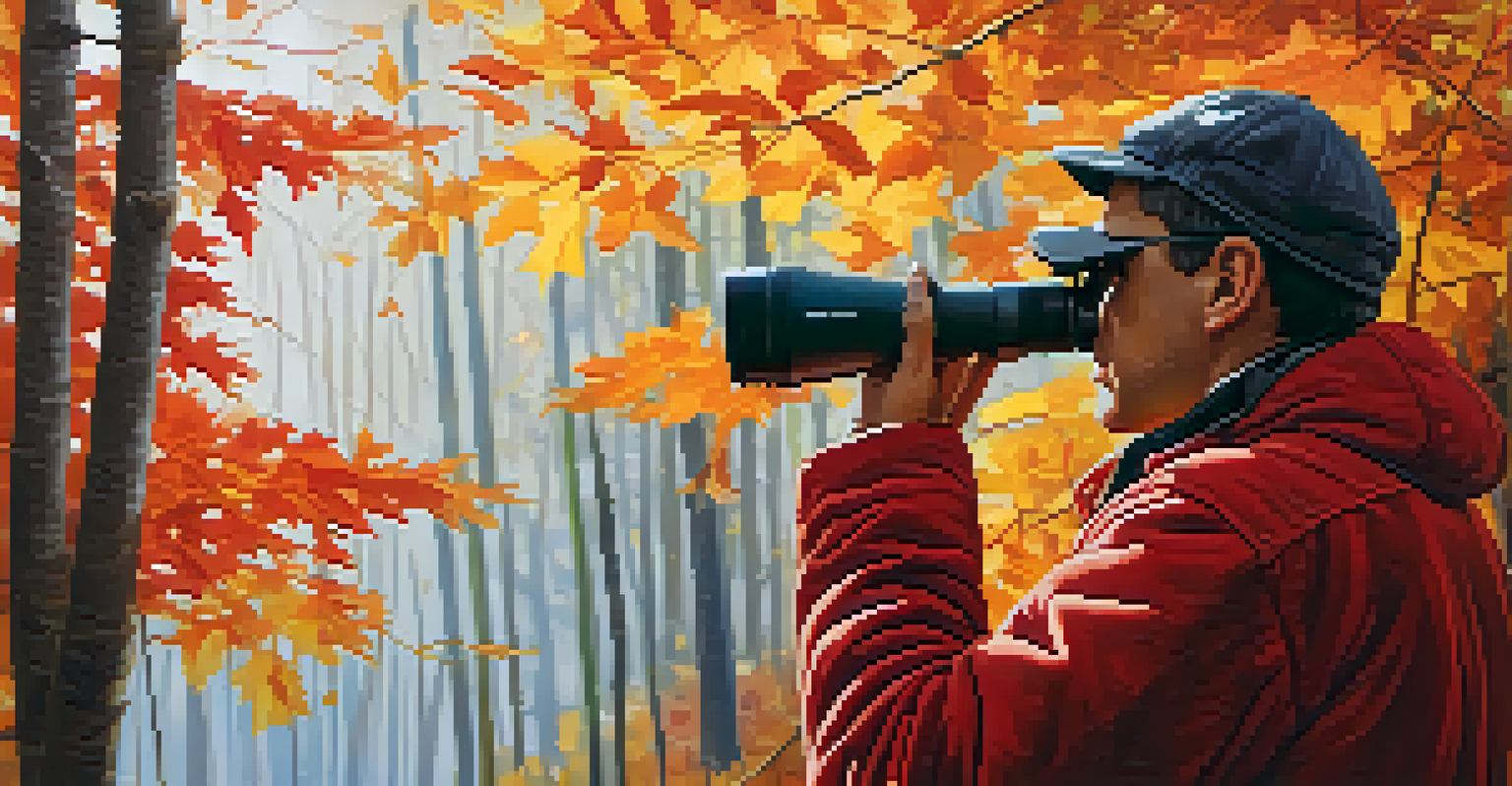Wildlife Tours: Experience Nature While Supporting Conservation

What Are Wildlife Tours and Their Benefits?
Wildlife tours offer an immersive experience in nature, allowing you to observe animals in their natural habitats. These tours can range from guided safaris to birdwatching expeditions, each providing a unique glimpse into the world of wildlife. The primary benefit is the opportunity to connect with nature while learning about different ecosystems and species.
In every walk with nature one receives far more than he seeks.
In addition to personal enjoyment, wildlife tours often contribute to the local economy. By participating in these tours, you help support local guides, accommodations, and businesses that rely on eco-tourism for their livelihood. This economic boost can be crucial in areas where conservation efforts are necessary to protect wildlife.
Moreover, many wildlife tours are designed with conservation in mind. They often incorporate educational components that inform participants about the importance of preserving habitats and protecting endangered species. This understanding fosters a greater appreciation for nature and encourages responsible tourism practices.
How Wildlife Tours Support Conservation Efforts
One of the most significant ways wildlife tours aid conservation is through financial contributions. A portion of the fees collected from tour participants is often allocated to local conservation projects. This funding can be used for habitat restoration, anti-poaching initiatives, and wildlife research.

In addition to direct financial support, wildlife tours can raise awareness about conservation issues. Participants who witness the beauty and fragility of ecosystems firsthand are more likely to become advocates for wildlife protection. This ripple effect can inspire others to take action in their own communities.
Wildlife Tours Foster Conservation
Wildlife tours support conservation efforts by financially contributing to local projects and raising awareness about the importance of protecting endangered species.
Finally, many wildlife tours work in partnership with conservation organizations, ensuring that their activities align with sustainable practices. These collaborations can enhance the effectiveness of conservation efforts, as local communities and wildlife benefit from the shared goals of preserving natural resources.
Choosing the Right Wildlife Tour for You
When selecting a wildlife tour, it's essential to consider your personal interests and the type of experience you desire. Are you fascinated by big cats, or do you prefer birdwatching? Identifying your preferences will help narrow down your options and ensure a fulfilling experience.
The greatest threat to our planet is the belief that someone else will save it.
Researching the tour operators is equally important. Look for companies that prioritize ethical practices and have a strong commitment to conservation. Reading reviews and checking for certifications can provide insight into their environmental impact and guest experiences.
Finally, consider the location of the tour. Different regions offer unique wildlife experiences, so think about whether you want to explore the savannahs of Africa, the rainforests of South America, or the coral reefs of Australia. Each destination presents its own set of wonders waiting to be discovered.
The Role of Local Communities in Wildlife Tours
Local communities play a pivotal role in the success of wildlife tours. Their knowledge of the land, culture, and wildlife enriches the experience for travelers. When local guides lead tours, they share their unique insights and foster a deeper connection between visitors and the environment.
Moreover, involving local communities in tourism initiatives empowers them to protect their natural resources. When residents see the benefits of conservation through tourism, they are more likely to engage in preserving their wildlife and habitats. This sense of ownership can lead to sustainable practices that benefit both the community and the ecosystem.
Local Communities Enhance Tours
Involving local communities in wildlife tours enriches the experience for travelers and empowers residents to engage in sustainable practices that protect natural resources.
Additionally, many wildlife tours include cultural experiences that highlight the traditions and lifestyles of local people. By blending wildlife observation with cultural immersion, travelers gain a more comprehensive understanding of the interrelatedness of humans and nature.
The Impact of Wildlife Tours on Endangered Species
Wildlife tours can have a profound impact on endangered species by raising awareness about their plight. As tourists observe these animals in their natural habitats, they become more informed about the threats they face. This knowledge can translate into advocacy and support for conservation efforts aimed at protecting these vulnerable populations.
Furthermore, many tours contribute to breeding and rehabilitation programs for endangered species. By participating in tours that focus on these programs, travelers help fund crucial initiatives that work to restore populations. This direct involvement can be both rewarding and transformative.
Additionally, wildlife tours often emphasize the importance of biodiversity, showcasing the interconnectedness of various species within an ecosystem. This understanding helps foster a sense of responsibility among travelers to support conservation efforts that protect not just singular species but entire ecosystems.
Sustainable Practices in Wildlife Tourism
Sustainability is at the heart of responsible wildlife tourism. Tour operators are increasingly adopting eco-friendly practices, such as minimizing waste, reducing carbon footprints, and supporting local economies. These practices ensure that wildlife habitats remain intact for future generations to enjoy.
Travelers can also play a role in promoting sustainability by choosing eco-conscious tours. This includes selecting operators that prioritize environmental conservation, use renewable resources, and limit group sizes to reduce the impact on wildlife. By making informed choices, tourists can actively participate in preserving the beauty of nature.
Sustainable Practices Matter
Adopting eco-friendly practices in wildlife tourism helps ensure the longevity of wildlife habitats, allowing future generations to enjoy the beauty of nature.
Lastly, many wildlife tours encourage participants to engage in conservation activities, such as tree planting or habitat restoration projects. These hands-on experiences not only provide a sense of fulfillment but also contribute to the overall health of the ecosystems being visited.
Making the Most of Your Wildlife Tour Experience
To truly enjoy your wildlife tour, preparation is key. Research the best times to visit specific locations, as wildlife activity can vary seasonally. Being aware of migratory patterns or breeding seasons can enhance your chances of witnessing incredible wildlife moments.
Packing appropriately for your tour can also make a significant difference. Comfortable clothing, sturdy footwear, and essential gear like binoculars or cameras can help you fully immerse yourself in the experience. Don't forget to bring a sense of adventure and curiosity!

Finally, keep an open mind and be respectful of wildlife and their habitats. Observing animals from a distance and following the guidelines provided by your guide will ensure both your safety and the well-being of the creatures you encounter. This attitude not only enriches your experience but also promotes responsible wildlife tourism.